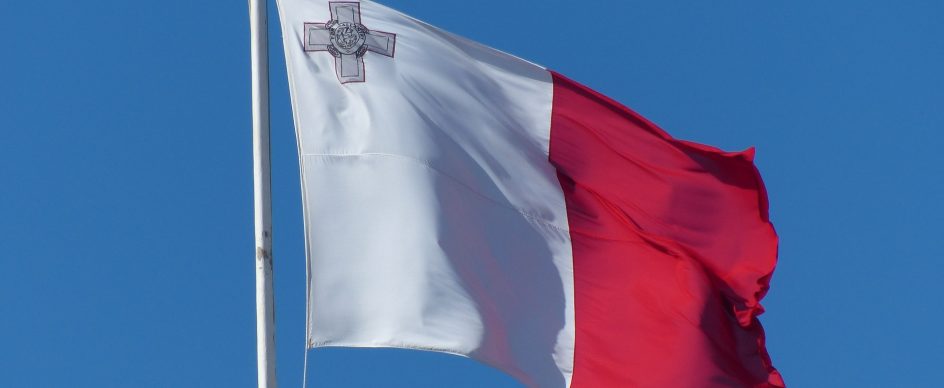
Malta’s Historical Timeline – all you need to know about Malta’s past
- Feb 16, 2019
Phoenician colonization, Arabic legacy, Knights of St.John, French occupation, British empire...
Malta’s history has been a roller-coaster ride due in massive part to it geographical strategic position in the Mediterranean Sea, lying equidistant between Europe and Africa. Its turbulent history has molded Malta into a melting pot of culture and influences from centuries of foreign rulers. This timeline begins around 5200 B.C. when the first Stone Age farmers arrived on Maltese shores and carries on to the present day.
Prehistory
Between around 5500 and 4500 years ago man first arrived on the islands of Malta. The society that grew was one that was both intelligent and highly resourceful, as we were left many elaborate structures that were the result of the unique, megalithic buildings at the time. An example of which are the temples at Ġgantija in Gozo which are considered the oldest, surviving, free-standing monuments in the world, predating the Great Pyramid of Cheops in Egypt and Stonehenge in Britain by a 1000 years. This culture ended abruptly circa 2500 B.C.for reasons unknown. However, they were replaced by travellers from many areas of the neighboring Mediterranean during the period known as the Bronze Age.
Phoenician Colonization
Around 750 B.C. the Phoenicians colonised the islands of Malta. This ancient maritime powerhouse with its wealth generated through trade and commerce, saw Malta as a means of shelter from the rigors of seafaring and named the islands Maleth which in Phoenician means shelter. Malta’s new rulers were also a highly civilised and recognised the importance of Malta’s location on growing trade routes.
Carthaginian Period
The Carthaginian Period started in Malta around 480 B.C. Carthage, was a city founded by the Phoenicians on the north coast of Africa in what is now modern-day Tunisia. The Carthaginians ruled the islands of Malta for about 250 years until the Romans seized control of Malta after the Punic Wars in 218 B.C.
Roman Times
This is a very important time in Malta’s history as it saw the introduction of Christianity and tied Malta’s future to the continent of Europe. St. Paul’s shipwreck off the islands in A.D. 60 is described in the Bible as Apostle Paul was being taken to Rome to be tried as a political rebel, but the ship carrying him was caught up in a violent storm only to be wrecked two weeks later off the Maltese coast. All aboard swam safely to shore, and the wreck is traditionally known as St. Paul’s Island and is marked by a statue. Following the breakup of the Roman Empire at the end of the 4th century the Maltese islands fell into obscurity during the Byzantine period, which lasted for another 375 years until the North African Berbers, leading the expansion of Islam, ruled the islands.
Arabic Legacy
There is very little concrete evidence to show for this period in Malta’s history, but their mark was left on the language of the islanders and in the names of many of the towns and villages. Crops however were introduced along with several innovative agricultural systems such as irrigation. The agricultural changes led to many modern-day Maltese delicacies coming from Arab tastes such as figs, almonds, sweet pastries and spices. Arab rule succumbed to the Normans when Count Roger secured the islands circa 1090. From this point the island fortunes were tied to Europe.
Norman Rule
Many believe that the flag of Malta is the legacy of the Norman Count Roger. In the bitter battle for the island apparently, he tore his red and white chequered flag in two and gave half of it to the Maltese men who joined him in the fight. This period of the Middle Ages saw the rise of the Maltese nobility who built their grand palaces in the walled city of Mdina.
You can see very fine examples of architecture from this period in the city to this day. During this time the rule of the island passed from German princes to French aristocrats and so on, as the fate of the nation was often dependant on the whim of marriages, treaties and alliances outside the island. It was under the Holy Roman Emperor Charles V that the Islands became part of the Spanish Empire and it was Charles who went on to grant the islands to the Knights of the Order of St. John.
The Knights of the Order of St. John
Rather like the rule of the British Empire that was to follow you cannot really miss the legacy of the Knights on the islands. Firstly, they introduced the Maltese Cross, a symbol synonymous with Malta around the world. The Knights ruled Malta for 250 years, but no era has really left such an indelible footprint. Their first home in the Three Cities is where the story starts, and then it moves to Valletta, the beautiful baroque fortified city, that was built following the Great Siege of 1565 with the Ottoman Empire. As you breathe in Valletta’s air you can sense the presence of the Knights in the palaces, street and gardens. Then as you travel across the island you are faced with feats of engineering and design coupled with architectural beauty from forts and bastions to churches and cathedrals. They also bestowed upon this small island nation works of art and beauty that are enjoyed by many till this very day.
French Occupation
The arrival of Napoleon Bonaparte and the French troops were initially welcomed warmly by the people of Malta. However, this was sadly in part because of a growing discontent of the people for the Order of St. John, rather than for the ideas of Liberté, égalité, fraternité of revolutionary France. The military strategist Napoleon saw the conquering of Malta as a step towards taking Egypt and then India, and other Far Eastern Colonies, from his great rivals the British. There was no desire to rule Malta for the good of the people. The locals were still very much dominated by aristocracy and the church. Eventually radical reforms that were introduced under French rule, were viewed by locals as being an extreme act upon the Church, and therefore a threat to Malta’s traditional way of life. For this reason within three months of the French take-over, Malta revolted. The French were forced back behind the fortifications of Valletta and the Three Cities by the revolutionaries, which is where they remained until 1800 when they surrendered to British Forces. The British Forces had been called to assist the people of Malta in finally obtaining their freedom. The British fleet made a triumphant entry to Malta via the stunning Grand Harbour to herald the start of their 150 years of rule.
The British Empire
British rule is seen as a very important era in the history of Malta with two World Wars and Malta’s Independence symbolizing significant events for the people of Malta. British legacy lives on in many aspects of life on the islands, from business to laws and education. After assisting with the expulsion of French forces the British did not gain full sovereignty of the islands until the end of the Napoleonic wars in 1814. From this point on Malta became a strategic stronghold for the British Empire in the region and a stepping stone for the Empire to expand to the East. Through war and peace Malta and her fortunes were now linked to that of Britain and her Empire. This was at its most evident during the crucial years of World War II when the world held its breath and watched as the people of Malta played a pivotal role in history. The bravery of the Maltese people in the Mediterranean theatre of war, was marked as King George VI awarded the whole population the George Cross’ for valour. After WW2 the movement for self-determination grew stronger and finally Malta was granted independence on the 21st September 1964. Ten years later the islands became a Republic within the Commonwealth, however British forces retained a presence on the island until 1979. In 1990 Malta applied for membership of the European Union which was finally granted in 2004, and four years later Malta adopted the Euro too as its currency.
The rest as they say is history…




